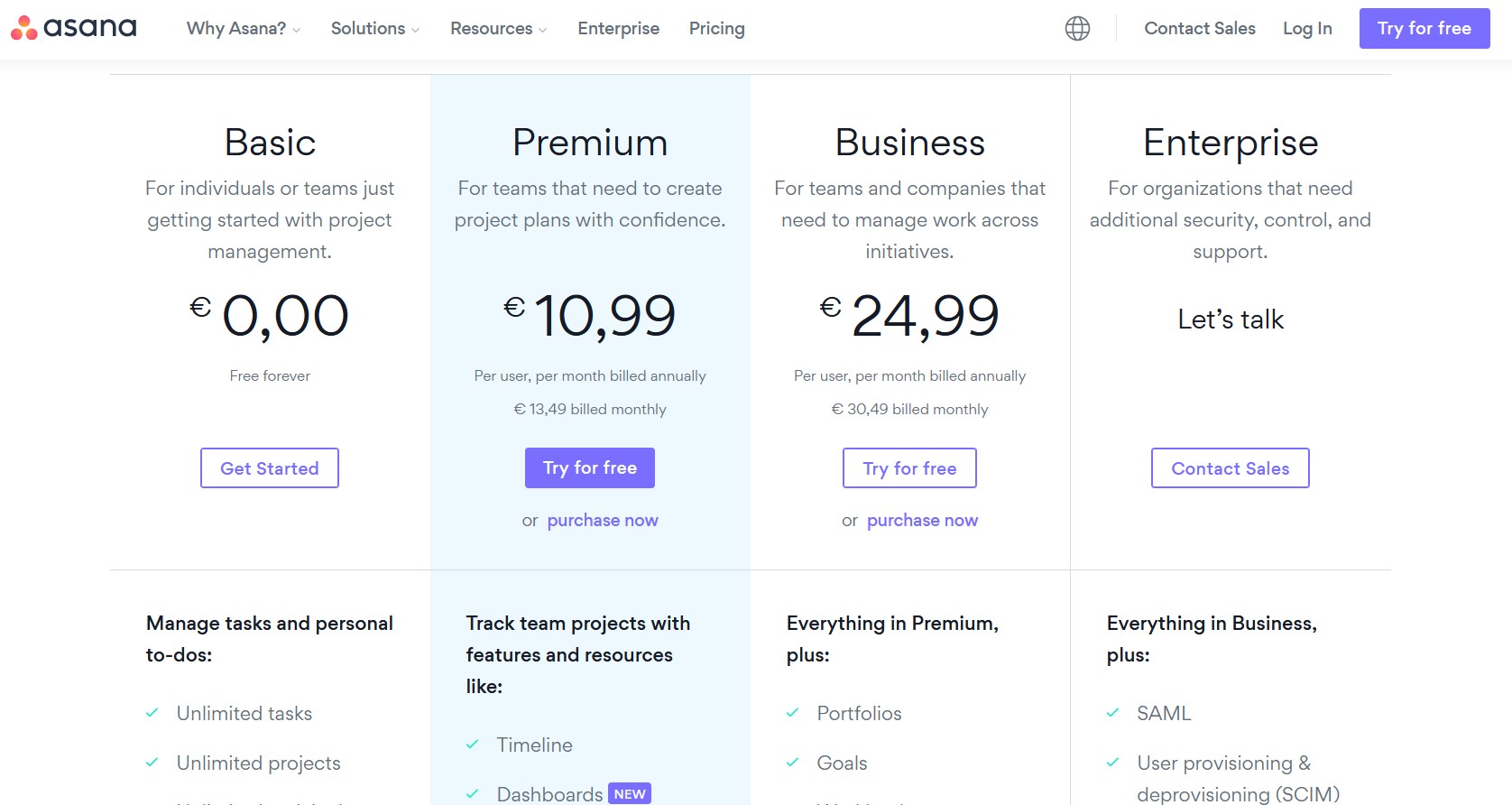SaaS Business Model - The Best Way To Generate Regular Revenue For Digital Projects?
What is SaaS? Let’s begin with knowing SaaS a little more. SaaS stands for Software as a Service. It’s...

With that in mind, you might be wondering – is this the right time to start working on your SaaS App? If so, what do you need to take into consideration before you proceed to development?
In the following article, you will find the essential details on SaaS application development, including what is a SaaS model, why you should develop a SaaS application and the benefits and risks that come with it.
SaaS, or Software as a Service, is a SOFTWARE DELIVERY MODEL where an application is centrally hosted and made available to the customers over the internet by a third-party provider.
It is also referred to as ‘on-demand software.’ It is a new sales model that has been steadily replacing conventional software licenses in the last decades.
The majority of SaaS products are web and mobile applications that don’t have installation charges, and individuals pay a subscription fee (monthly or yearly) for using the application. Its popularity is growing at a rapid pace due to the number of benefits it offers. According to a study, more than 86% of mobile startups are expected to adopt the SaaS model by the end of 2022.

Source: bettercloud.com
If your company plans to develop software, it’s worth evaluating whether creating a SaaS product will be the best option. Let us discuss the benefits and risks of SaaS application development.
When evaluating SaaS development’s advantages, it’s worth looking at what SaaS apps bring to the table from both a business and user perspective. It’s important to notice that your target audience’s value from using your SaaS will also positively influence your business goals.
Here are some of the most prominent advantages of SaaS development:
One of the biggest and most valuable benefits of using the SaaS business model is that it’s easy for applications to be installed and configured compared to traditional service models.
It reduces the time spent on administration and installation and eliminates the issues that come with software deployment. Additionally, it also provides businesses with the flexibility needed to change and adjust when they require it. For instance, if a company needs a KPI dashboard software, instead of buying a license offline, they can choose a SaaS software and create accounts for the entire team in a matter of minutes.
A 1% improvement in price can boost profits by 11%. It seems that price adjustment is the most effective strategy to improve revenue generation. Price management involves aligning the primary value metric with the customers’ perception of where the value is.
Source: 99firms.com
Reducing deployment and maintenance costs can profit everyone – both the SaaS developers as well as their clients. Just think of it: when a business decides to use a SaaS instead of building their own solution, they lower their software development and infrastructural costs, which is a compelling selling point. By offering a product that provides significant cost savings, you present them with a very attractive alternative to in-house, custom-built solutions.
Another key benefit that speaks in favour of developing SaaS apps is how incredibly simple it is for users to try out and use. Your customers can use the software application anywhere, anytime. It is easy for them to sign up for a trial and decide whether they fit their needs.
That said, user volume works in your favour – the more leads you can get to try the free version of the product, the higher the chances of generating revenue for your business via paid plans. It is worth remembering that SaaS solutions perfectly fit the current market landscape, with more and more businesses embracing remote work.
With the benefits explained, let us now look at SaaS app development’s potential risks.
Let’s face it — your business won’t grow if your product isn’t scalable. If you fail to maintain high app performance, your customers might decide to leave you for one of your competitors. This would come as no surprise, especially if their businesses relied on your services and would not tolerate lagging software.
To keep up your SaaS app competitive, you must continuously monitor and optimize:
Simply put, scalable applications will let you gain customers and add value to your business in the long term.
Data protection and security are significant concerns for businesses and software vendors alike. When you acquire users, you also need to keep their data safe. If you fail to do so, the consequences can be grave. Security issues are a concern of even the biggest software companies in the world, including Adobe.
SaaS statistics show that 18.1% of files uploaded to cloud-based file-sharing and collaboration services contain sensitive data.
Source: 99firms.com
In 2013, the company admitted that nearly 3 million encrypted customer credit card records had been stolen. The company’s breach cost at least 2 million dollars – $1 million in legal fees and $1 million in customer settlements.
What can we learn from this example? Personal data, confidential company data, bank details, and much more may get exposed if your SaaS offers poor security.
For your SaaS app to be successful in the long-term, it needs to bring in revenue. That being said, monetization is one of the biggest challenges from day one. Firstly, you must decide on how you’re going to acquire users and generate revenue. Are you going to provide a free app and earn on ads? Or maybe, you’re going to bet on a free trial to convince users to buy?
You’ll also have to decide how the pricing will change as your company grows and the competitor landscape evolves. You need to maintain the right value-for-price ratio at all times.
Finally, with all of the above in mind, you need to make sure that your monetization model is feasible and it accounts for all the app upgrades and maintenance costs.
Now that we’ve mentioned pricing let us take a closer look at the most common SaaS payment models.
When you select your SaaS application development monetization model, consider your project timelines, marketing expectations, and budget constraints. Below are the most common pricing models encountered in SaaS businesses.
In this model, the user is given access to your full SaaS product free of charge. One the one hand, deciding on this model will likely attract more users than if you charged your customers. On the other, you will have to find other ways to generate revenue. For instance, you can display short, in-app advertisements as the user jumps between the screens.
The Freemium model is one of the most successful models available for users and developers. It provides users with standard functionality free of charge and then offers users access to premium features at an additional cost. Often, the Freemium model includes several tiers of paid plans. Such a model brings advantages for both the customer and the SaaS company.
A freemium model allows the user to test the product and verify whether it’s something they’d like to invest in further. For the company, it minimizes app abandonment and churn rates, as users are already convinced that the app is worth paying for when they upgrade from a free account.

Asana is a popular SaaS that offers a free account with basic features. When the user gets to know the application and decides that he needs more functionality, he can switch to a paid subscription.
The subscription model is similar to Freemium. However, the main difference between them is that the subscription model doesn’t feature a free plan. It features one paid plan, which unlocks all the app features for a given period of time. The best example of a subscription model most people are accustomed to is B2C apps like Netflix or Amazon Prime. You pay every month, and all the videos on the platform become available.
The subscription model is also one of the main reasons why businesses decide to build SaaS apps. In fact, it’s not an overstatement that the Software as a Service industry is going through a real revolution.
Out-of-the-box software such as Photoshop, which used to cost thousands of dollars, is now available via subscription. Anyone can visit a SaaS website and subscribe to the product. Furthermore, such a monetization model creates great upselling opportunities, such as offering complementary services or products.

Pipedrive is a recognized sales funnel management application. The authors do not provide a free account but offer a free trial period, after which you have to decide on a paid subscription.
Lastly, SaaS apps also come in a one-off purchase model. It means that users pay once and use the product indefinitely. In recent years it has become less popular, as it isn’t always financially viable – especially given that SaaS applications need to be upgraded at regular intervals. On top of security, UX updates, and maintaining high app performance, you must continuously attract more users by investing in marketing.
Now that you’ve learned about the benefits and risks of SaaS apps and how they’re monetized, we’ll take a look at how you can choose the best saas development services partner for your product.
To predetermine your SaaS product for success, it’s crucial to work alongside industry experts who have the required experience. Depending on your preference, you can decide to hire an in-house team or work with an external SaaS development company. If you decide on the latter, here are the things to look for in an external partner:
With that in mind, choose a partner who will guide you through the entire app development process. From helping you define your MVP, designing your apps UX and UI, all the way through software development and a successful market launch.
SaaS apps will remain a popular software development option on the market.
There are several benefits of SaaS app development. Most importantly, it’s cost efficiency, reduced time to benefit, and accessibility.
There are a few monetization models you can choose from, with Freemium being increasingly popular among top SaaS products. It provides users with a preview of the product on the free plan, and – should they upgrade to a paid subscription – it minimizes the risk of their churn.
If you have an idea for a SaaS application, but you lack the expertise to develop it internally, then it’s a good idea to work with an external SaaS development services company.

What is SaaS? Let’s begin with knowing SaaS a little more. SaaS stands for Software as a Service. It’s...
Cloud computing is quickly gaining prevalence on the market. That’s hardly surprising - cloud infrastructures have revolutionized the way we manage...
Application performance monitoring allows you to have an accurate view of what's going on with your application as a whole...